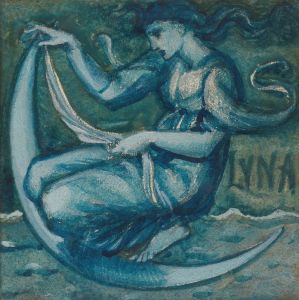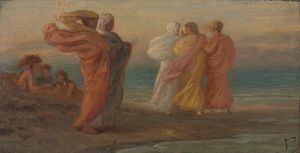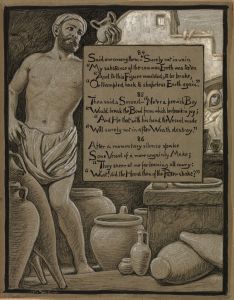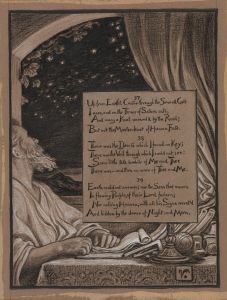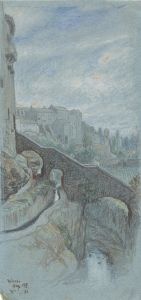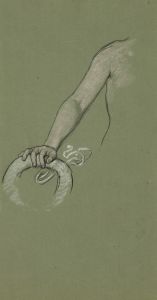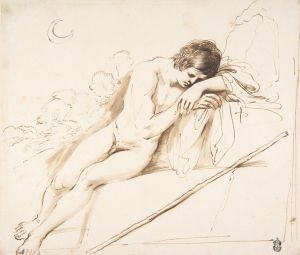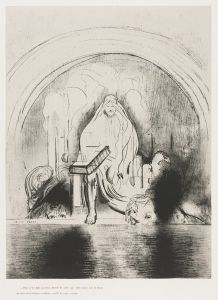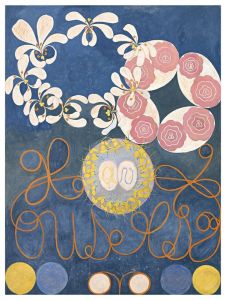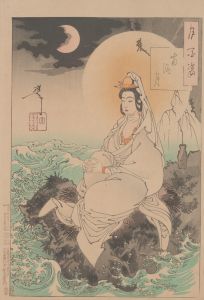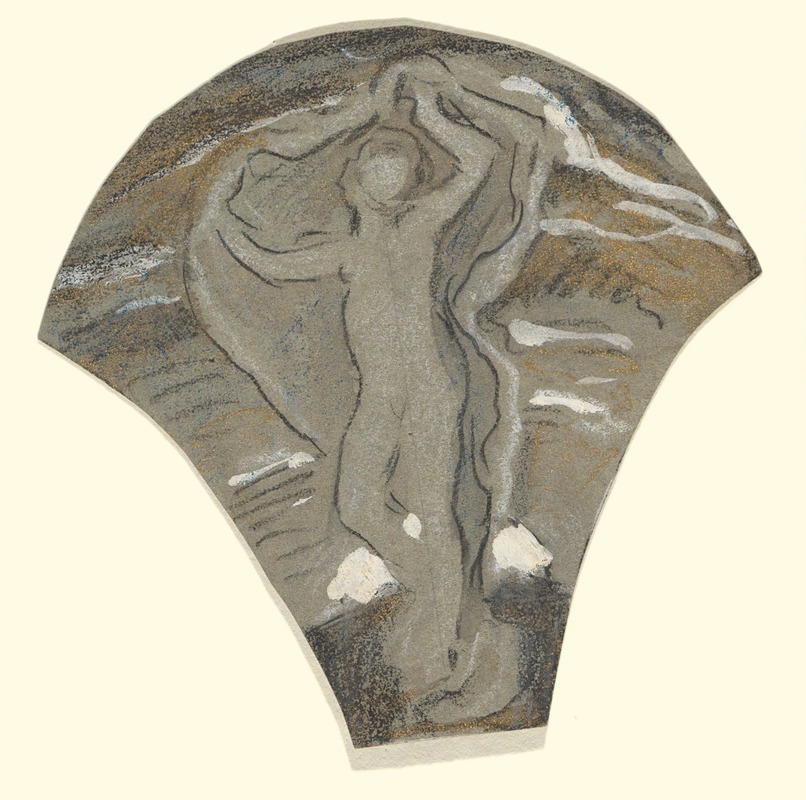
Study for Luna
A hand-painted replica of Elihu Vedder’s masterpiece Study for Luna, meticulously crafted by professional artists to capture the true essence of the original. Each piece is created with museum-quality canvas and rare mineral pigments, carefully painted by experienced artists with delicate brushstrokes and rich, layered colors to perfectly recreate the texture of the original artwork. Unlike machine-printed reproductions, this hand-painted version brings the painting to life, infused with the artist’s emotions and skill in every stroke. Whether for personal collection or home decoration, it instantly elevates the artistic atmosphere of any space.
Elihu Vedder was an American symbolist painter, born on February 26, 1836, in New York City, and he became known for his mystical and allegorical works. One of his notable works is "Study for Luna," which reflects his interest in symbolism and the mystical aspects of art. Vedder's career spanned the late 19th and early 20th centuries, a period marked by a fascination with the esoteric and the exploration of themes beyond the visible world.
"Study for Luna" is a preparatory work that showcases Vedder's meticulous approach to composition and his deep engagement with mythological and celestial themes. The painting is a study, meaning it was likely created as a preliminary exploration of ideas and forms that Vedder intended to develop further in a more finished piece. This practice was common among artists who sought to refine their concepts and experiment with different elements before committing to a final version.
The subject of "Luna" refers to the Roman goddess of the moon, a figure often associated with femininity, intuition, and the night. In classical mythology, Luna is depicted as a serene and ethereal presence, driving her chariot across the night sky. Vedder's interpretation of Luna would have been influenced by these traditional associations, as well as by the broader symbolist movement, which sought to convey deeper meanings through allegorical and dream-like imagery.
Vedder's work often incorporated elements of the fantastical and the otherworldly, drawing on a wide range of influences, including literature, mythology, and his own personal experiences. His time spent in Italy, where he was exposed to Renaissance art and classical antiquity, also played a significant role in shaping his artistic vision. This background is evident in the classical references and the attention to detail found in "Study for Luna."
The painting likely features Vedder's characteristic use of muted colors and soft, flowing lines, which contribute to the dream-like quality of his work. His technique often involved a careful balance of light and shadow, creating a sense of depth and mystery. While specific details of "Study for Luna" are not widely documented, it can be inferred that these elements would be present, given Vedder's consistent style and thematic interests.
Elihu Vedder's contributions to art extend beyond his paintings; he was also an accomplished illustrator and poet. His illustrations for the Rubáiyát of Omar Khayyám are particularly celebrated, showcasing his ability to blend visual art with literary themes. Vedder's work continues to be appreciated for its imaginative qualities and its ability to evoke a sense of wonder and introspection.
"Study for Luna" represents a fragment of Vedder's broader exploration of the mystical and the symbolic, a testament to his enduring fascination with the unseen forces that shape human experience. While specific details about this particular study may be limited, it remains an integral part of Vedder's artistic legacy, reflecting his unique vision and his contribution to the symbolist movement.





